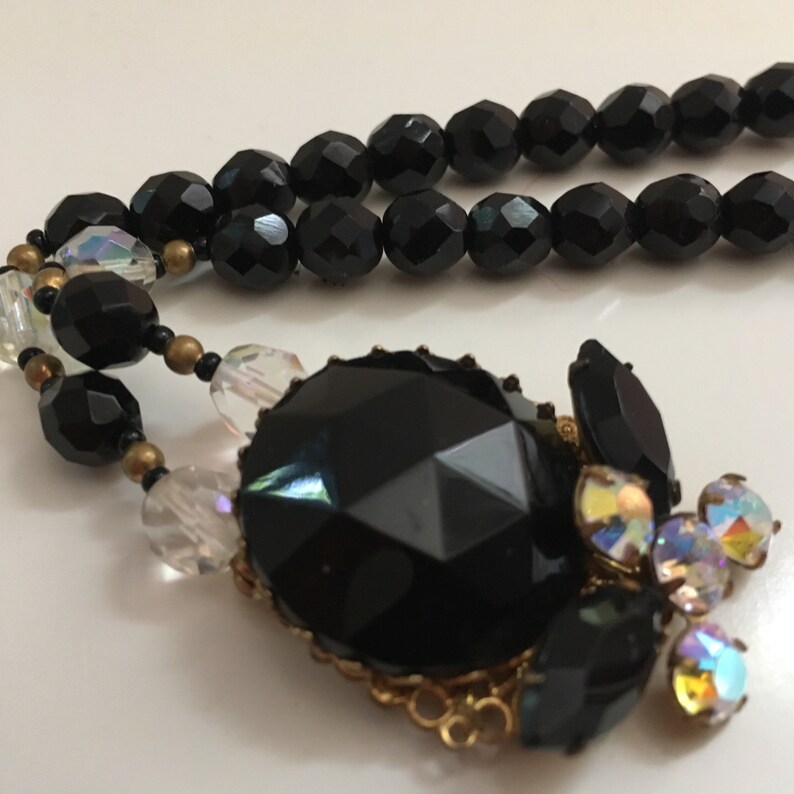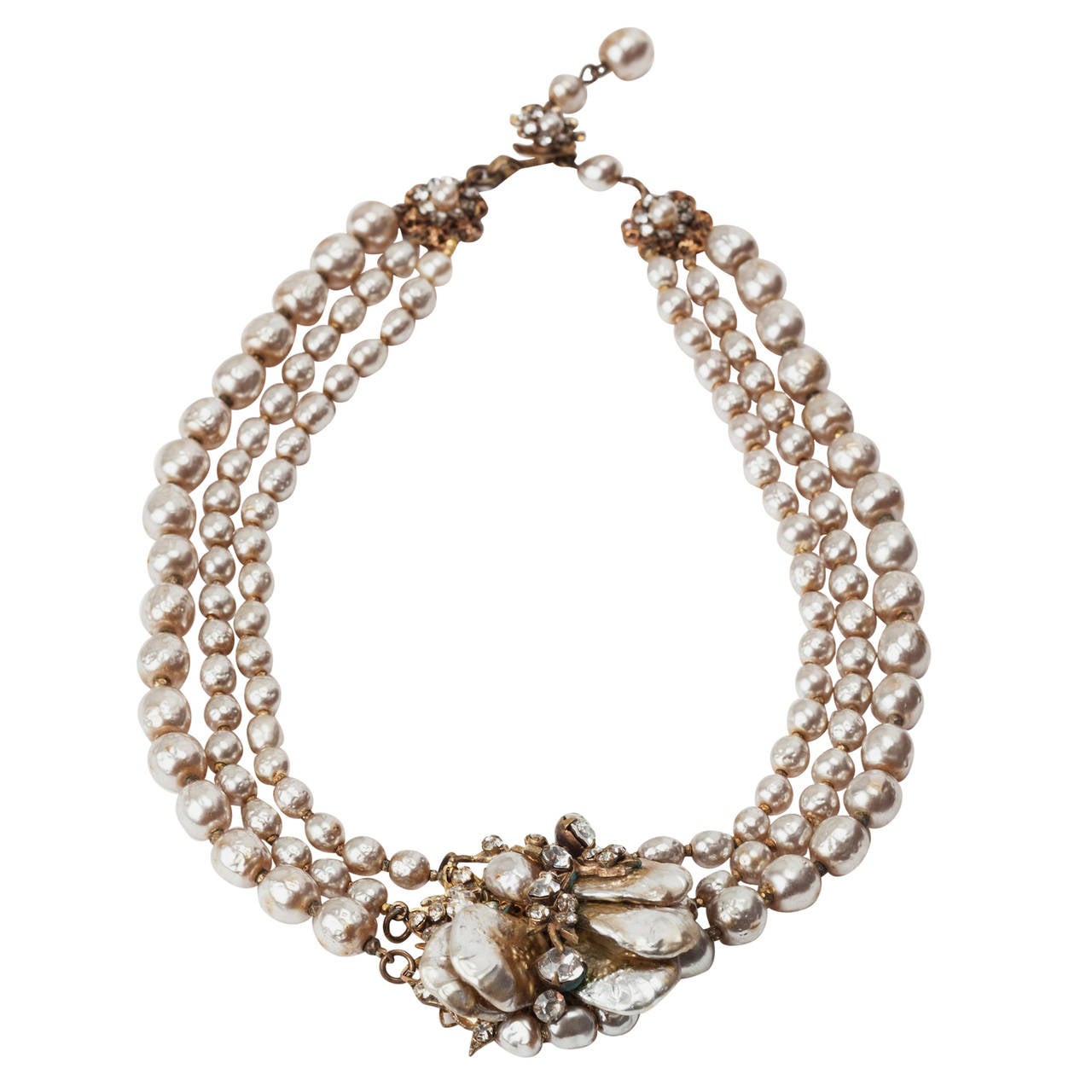
I have spent a good deal researching this piece and can't find another like it. I left the non-working sister hook closure as it is not in the way and I didn't want to compromise the original integrity of the necklace by removing it.

I have installed a vintage spring closure which matches so well that it truly looks like it is original - dates to the same era. There is only one thing to report: The original closure (left in tact) was a "sister hook closure" albeit not working. eautiful Haskell demi, but I do find Haskell used a good deal of the red glass in her designs in the 40's. All stones and rondelles are suspended from Haskell's ever familiar gold plated book chain. The faux stones are dotted with explosions of color which have the look of abalone and bits of colorful sea glass. Jillinda Falen has been buying and selling antiques for over 30 years and is a licensed REALTOR and estate liquidation specialist.Miriam Haskell Bib Necklace - A gorgeous circa 1940 Signed Miriam Haskell bib necklace! Cobalt blue glass stones and faux agate stones are a showstopper as they drip from the book chain necklace accompanied by shiny rondelles. Make sure you get a good guide to identifying Miriam Haskell jewelry if you want to seriously collect and scour the thrift stores, flea markets and estate sales because many people do not realize what they have. Some say her hard work during those two events stressed her out so badly that those were the roots of her decline although she was a devout health food advocate.

She helped her native city when the Ohio River flooded in the 1930’s and aided in the war effort in the 1940’s. She had lived a long, exciting life and was a trailblazer for businesswomen everywhere.

Sadly, Miriam died in Cincinnati in 1981 while living with her nephew. The most collectible pieces are those that were produced in the 1930’s and 1940’s. In 1950, a store in New England required that the pieces be signed, so the pieces carried a small horseshoe with the Miriam Haskell name. It can be hard to authenticate Haskell pieces, as the vast majority was not signed. Miriam lost the company to her brothers as her health declined. When collecting this beautiful costume jewelry, make sure that none of the beads or stones has been replaced with those of inferior quality. Since the jewelry was designed for the high society ladies of the day, it is generally high quality and very sought after by collectors. Lucille Ball, Joan Crawford and the Duchess of Windsor were big fans of Miriam Haskell jewelry and Joan Crawford’s huge collection was sold at auction with much fanfare in 1978.Įven the ads from the jewelry are sought after by Haskell collectors. The Haskell jewelry was featured in many advertising campaigns featuring models wearing the large chucky earrings, pins and bracelets and caught the eye of many celebrities. Most beads are glass, and they even used crystals from Swarovski in her creations. Miriam’s work caught the eye of Coco Chanel, and the two often traveled together to Paris on buying trips for the beads and crystals that were used to produce the jewelry. The duo set up shop in the old McAlpins Hotel in New York City in 1925. Most women did not work in the business world at this time and Miriam hired a window display worker from Macy’s named Frank Hess, who actually designed most of her jewelry line. After working in her family’s dry goods store for years and attending college for a few years, Miriam moved to New York with just $500 in her pocket and opened a little jewelry store. Born in Indiana in 1899, Miriam was one of four girls in the family.

Some of the most sought after vintage jewelry is that made by Miriam Haskell.


 0 kommentar(er)
0 kommentar(er)
